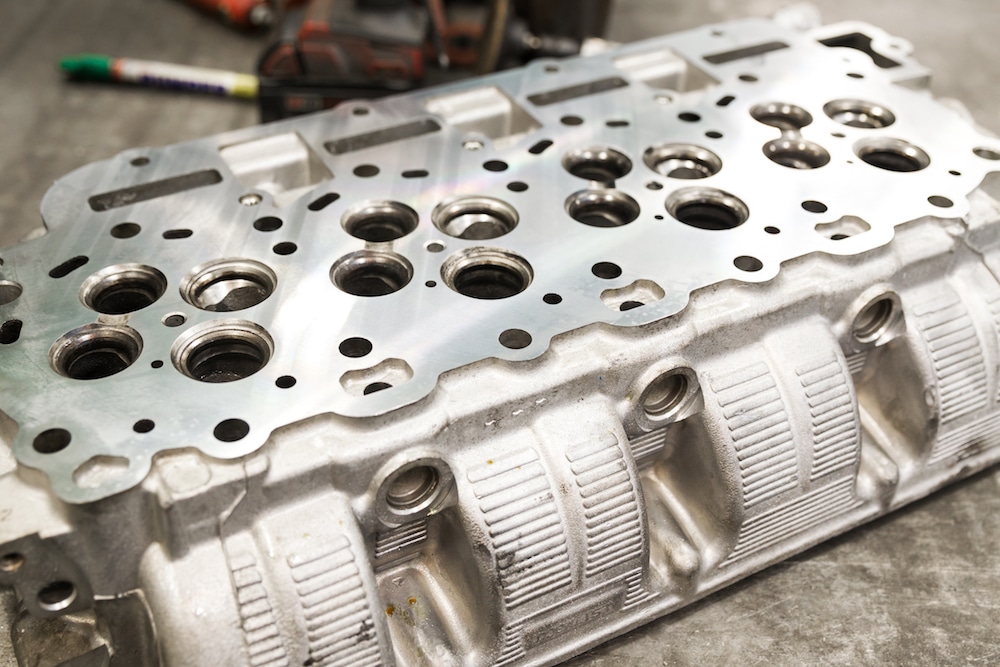
Rebuilt, Remanufactured and Refurbished Engines: What’s The Difference?
April 14, 2020What is a Rebuilt Engine?
A rebuilt engine is an engine that is taken out of a vehicle, taken apart, and put back together. The engine is carefully disassembled where each part is meticulously cleaned, necessary parts of the engine are replaced, and the engine is reassembled with everything in better order than previously. Every part of the engine is inspected, and any part that does not meet the required standards is replaced. All parts of the engine that do meet the specifications are reused to reduce the environmental and economic impact of the work being done to your engine.
Pros
- Extends the life of your engine, and in turn, vehicle, for a fraction of the cost of replacing your car
- All critical components have been replaced, and the replaced parts meet or exceed the standards of the previous engine parts
Cons
- Being a mix of old and new parts, some older parts could shorten the life expectancy of the vehicle
- The parts are inspected but not held to the same blueprint standards of remanufacturing
- Some of the used parts could have imperceivable wear (heat stress or microcracks) and cause the engine to fail
What is a Remanufactured Engine?
A remanufactured engine is a more extensive machining job than rebuilding, because the engine is pulled out of the vehicle and returned to factory conditions and blueprint specifics.
Everything that has any potential wear is replaced to bring the engine back to its original standards. Anything that isn’t replaced is remanufactured to the standards of a new part. The mechanical tolerances are restored by re-machining or installing the necessary inserts to restore the unit to its original mechanical tolerances.

Remanufactured engines meet the standards for OEM tolerances, durability, and quality. New pistons, connecting rods, rings, bearings, camshafts, lifters, and oil pump are installed. Essentially, the only part from the original engine that is used is the block — if the block is in rebuildable condition.
Pros
- Replaces the old parts of the engine extensively, from the seals, to the gaskets, to the pistons so the engine is fully replaced
- Extends the life of an engine, longer than a rebuild
- Often has a warranty that is much longer than a rebuilt engine
- More environmentally friendly that replacing your vehicle, reducing the non-renewable resources needed to manufacture new vehicles
Cons
- Because the process is very exhaustive, remanufacturing can be more expensive
- Can take a longer time to remanufacture the engine completely when compared to other options
What is a Refurbished Engine?
A refurbished engine figures out which part of the engine is a problem, and only replaces the failed parts.
Refurbishing the engine doesn’t look at general wear and tear, but it fixes what has clearly caused the engine to fail. The engine is not taken apart completely, nor is it cleaned and inspected entirely. The engine is only taken apart to replace what is necessary to get the engine running again, rather than increase overall longevity and efficiency.
Refurbishing is the easiest and quickest way to get your vehicle running again, but it also only addresses immediate problems, potentially leading to issues in the future.
Pros
- Because the engine does not need to be completely taken apart and cleaned, it is the most economical choice
- The process is faster than rebuilding or remanufacturing
- Does not risk part failure through the rebuilding process, as nothing is prematurely taken apart
Cons
- The lifespan of your engine is not extended beyond that of fixing a single issue, as no other aspects of the internal engine are inspected.
- The debris and grime that accumulates over time is not cleared away
- The usual wear and tear that comes from regular driving isn’t updated or replaced
- Does not (usually) come with a warranty
- Refurbishing is more of a quick-fix than a long term solution like rebuilding or remanufacturing
There are many items to consider when deciding how you should deal with issues and usual wear and tear associated with your engine.
The time it takes your engine to get back up and running is a consideration if you don’t have any other mode of transportation, cost is always something you need to be aware of, and you want to talk to your mechanic to see what the best option is to keep your vehicle working as well as possible.
Some engines can handle more work than others, and certain brands are more susceptible to rebuilding or remanufacturing. As such, always talk to a professional when it comes to your vehicle’s engine.
DFC Diesel has proudly earned the title of Canada’s largest diesel remanufacturing facility, with standards of excellence unmet by others. Learn about the DFC Diesel difference today.
Considering a remanufactured engine? We’d love to talk.



